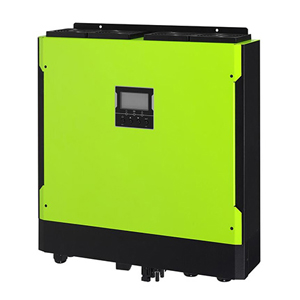As the core of the power generation system, the solar inverter's life directly affects the normal operation of an entire power station. The life of the solar inverter has become a special concern for everyone. So what are the factors that directly affect the life of solar inverters? Let's take a deep dive into the factors that directly affect the life of a solar inverter in terms of component life, design and installation overall.
 Component life
Component life
The solar inverter is theoretically a switching power supply, so most of its components can be divided into resistors, capacitors, diodes, power devices (IGBT or MOS tubes), inductors and transformers, current sensors, ICs, optocouplers, relays, etc.
The service life of resistors, chip capacitors and ceramic capacitors can usually be more than 20 years. When designing inductors and transformers, as long as the temperature of their raw materials does not exceed, theoretically, they can operate for a long time without being ineffective. Low-power diodes and triodes can run for more than 100,000 hours. The mechanical life of the relay is usually more than 1 million times, and the electrical life is more than 10,000 times. As long as the power device IGBT or MOS meets the design specifications, the lifespan is usually not considered. Fans and fuses are fragile components, which will not directly affect the life of the solar inverter. If they are damaged, they can be replaced on time. The life of film capacitors is more than 100,000 hours, and the life of electrolytic capacitors is usually at 105 °C. In 2000-3000H, the longevity is only 5000-6000H, but with every 10℃ drop in temperature, the lifespan doubles. Therefore, in solar inverters, the biggest shortcoming of components is the life of electrolytic capacitors.
Design Factors
Component longevity is a fundamental element in ensuring the longevity of a solar inverter, but quality design is a core element in ensuring the longevity of a solar inverter. What design elements will seriously affect the life of solar inverters and are difficult to detect in the short term?
Air temperature is one of the main factors that directly affect the life of solar inverters, especially for components such as electrolytic capacitors and optocouplers. Every time the temperature rises by 10°C, the life of electrolytic capacitors is reduced by half. Light loss, but the IGBT is usually driven by an optocoupler, so the ineffectiveness of the optocoupler will lead to the destruction of the IGBT.
When the relay is switched at zero current, the lifetime is up to 1 million times, but with the increase of the current during switching, the lifetime is almost a coefficient loss. Accurate software control to make the relay switch in the direction of zero current is the main factor to ensure the lifetime of the relay.
The environment of solar inverters is usually harsh and affected by many factors, such as poor power grid quality and large local inductive loads. If the driver is affected, it is easy to cause it to misconnect and cause the machine to explode.
Comprehensive factors
Although the string solar inverter is IP65 rated and can be installed indoors and outdoors, the quality of the installation environment has a great impact on the life of the inverter. If the solar inverter is installed in an environment with high sun exposure, environmental humidity, and pH, the life of the solar inverter will be shortened, and at the same time, it will easily cause the solar inverter to overheat and reduce the load in an exposed environment, which will directly affect the power generation. . Therefore, choosing a suitable installation environment is also the main factor to ensure the life of the solar inverter.
